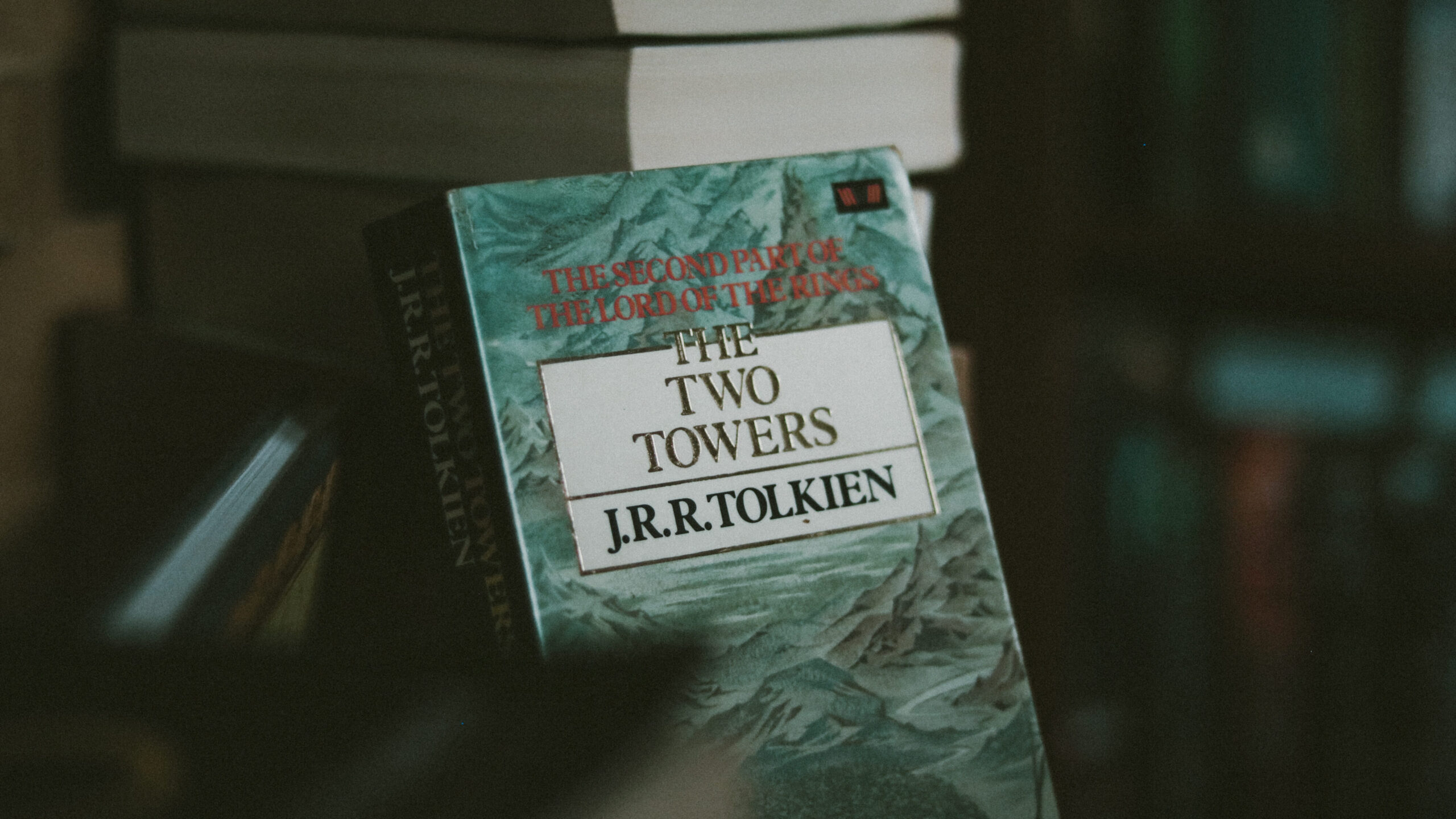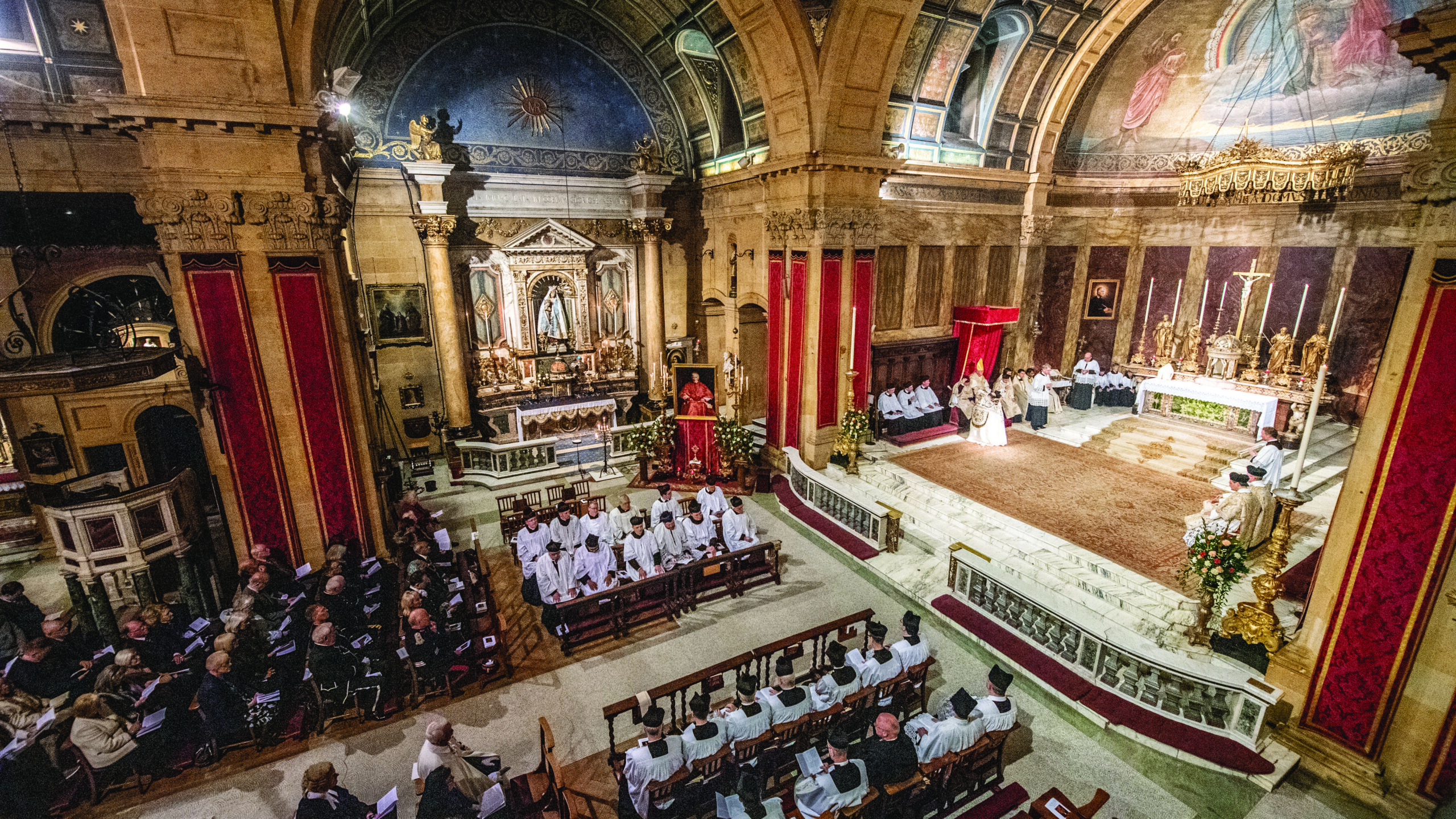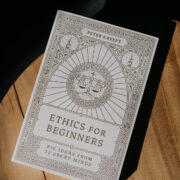Each year on March 25, Tolkien enthusiasts around the world celebrate “Tolkien Reading Day,” honoring the life and work of “The Professor” by sharing favorite passages from his books. The timing of this global literary celebration is chosen because on this day in The Lord of the Rings, the One Ring was destroyed in the fires of Mount Doom, thus fulfilling Frodo’s quest, overthrowing Sauron, and saving Middle-earth.
But such is Tolkien’s literary artistry that there are further layers of meaning to this date, and tracing these helps us even more fully and deeply appreciate his skill and enjoy his imaginative creation.
Tolkien would have been aware from his early childhood that March 25 was a significant date in the Christian calendar. It marks the Annunciation: the announcement by the archangel Gabriel to Mary that she had been chosen to be the Mother of God, as recounted in the Gospel of Luke. At the moment of her acceptance, by the power of the Holy Spirit, she conceived Christ—the Savior, the redeemer of the world—in her womb. In the Catholic liturgical calendar, the Annunciation is celebrated as a solemnity, that is, as a feast day of the highest rank, alongside such days as Christmas and Easter. The date of the Annunciation is traditionally held also to be the date of Christ’s Crucifixion and death, adding further depth to the meaning of March 25.
In The Lord of the Rings, two dates have particularly notable connections with the Christian calendar. The Fellowship sets out from Rivendell on December 25—Christmas, the Nativity of Christ—and as we have noted, the Quest is completed on March 25, the Annunciation.
How intentional was Tolkien’s choice of these dates? On the one hand, he remarked in a 1967 interview that the December 25 date “occurred strictly by accident, and I let it in to show that this was not a Christian myth anyhow.”1 On the other hand, in the Nomenclature, a guide for translators that he prepared for his publisher, he wrote that in the world of the story, December 25 “had then no significance,” but he continued, “though Dec. 25 (setting out) and March 25 (accomplishment of quest) were intentionally chosen by me.”2
December 25 evidently arose first from the narrative chronology, and the story is “not a Christian myth” because it is set in a pre-Christian world. However, having settled on the date, Tolkien seems to have appreciated its liturgical resonance and deliberately chose March 25 to heighten the effect. In the interview, as he was responding to the question “How do you feel about the idea that people might identify Frodo with Christ?” he probably emphasized the first aspect in order to squash a potential (and erroneous) allegorical reading.
“There is, in fact, quite a lot of theology included in The Lord of the Rings.”
Tolkien was always adamant that The Lord of the Rings was not an allegory. He was emphatic that he had no “message” in the sense “of preaching, or of delivering myself of a vision of truth specially revealed to me!” Rather, he says, he was writing the sort of story he enjoyed—but, he says, “in such a process inevitably one’s own taste, ideas, and beliefs get taken up.”3 His ideas and beliefs were deeply rooted in the Christian faith; and so “inevitably,” by a sort of imaginative osmosis, they have been absorbed into to become part of the foundations of his fictional world.

In fact, Tolkien was annoyed when a critic claimed that The Lord of the Rings “contained no religion.” On the contrary, he asserted, Middle-earth “is a monotheistic world of ‘natural theology.’” True, he acknowledges that there is no organized religion, no churches or religious ceremonies, but this is, he says, because Middle-earth was a pre-Christian world.4 Even so, he points out that its religious practices, though undeveloped, were not altogether missing:
As a matter of fact, there are references to God, either direct, in which he is called ‘the One’ in one place, or by implication, as in the conversation between Gandalf and Bilbo and Frodo and what it was that was directing the finding of the Ring, or in the Númenórean Grace, which is said by Faramir. But, of course, if you mean religious practices, you don’t get much, except perhaps, say, the Elvish hymn to Elbereth.5
Tolkien explained that because it is a pre-Christian world, he has not put in an “‘embodiment’ of the Creator” into his story. In other words, there is no equivalent to the Christ-like Aslan in C.S. Lewis’s Narnia Chronicles, no single character who represents the divine, although figures such as Gandalf allow the reader to be, as Tolkien said, “reminded of the Gospels.” His reticence in portraying the Incarnate God sprang not only from the fact that the “Third Age” is a pre-Christian age, but also from a deep sense of humility at this central Christian mystery: “The Incarnation of God is an infinitely greater thing than anything I would dare to write.”6
But though he dared not ascend the Mount Everest of the Incarnation, Tolkien did imaginatively tackle lower religious summits—by implicit means. He remarked in one letter “There is, in fact, quite a lot of theology included in The Lord of the Rings.”7 Tolkien is exploring matters that pertain to his Christian faith, but by embedding them in the whole warp and woof of his text, not by painting them onto it.
We can also trace an interesting connection with Tolkien’s own experiences—and a reason why March 25 might have been especially memorable.
As a boy, Tolkien grew up with a close association with the Birmingham Oratory. (Indeed, his mother Mabel chose one of the priests of the Oratory, Fr. Francis Morgan, to be the guardian of Tolkien and his younger brother, Hilary, after her death.) But when Mabel and her sons first moved into the neighborhood, the Birmingham Oratory’s church was not the impressive, copper-domed edifice that stands there today. Rather, as one of the Oratory priests of the time explained it, “it simply consisted of four plain brick walls and a roof; and the roof itself was bought, ready-made and second-hand, from a disused factory.”8 During his youth, Tolkien witnessed the complete transformation of this building. The “Old Church” had become crowded and inadequate, and the decision was made to replace it with a new, classical-style basilica, as a memorial to John Henry Cardinal Newman, the founder of the Birmingham Oratory.

The foundation-stone was laid on March 25, 1904: the Solemnity of the Annunciation.9 Since the Oratorians had no other land on which to build, the Memorial Church was constructed around the “Old Church,” which remained in use for two years before it was finally demolished, having been “gradually pulled down as its successor was built.”10 The first Mass was celebrated in the partially completed new building on October 9, 1906, the anniversary of Newman’s conversion to Catholicism; it was officially opened on December 8, 1909 (the Solemnity of the Immaculate Conception).11 It is probable that Tolkien was present on all of these dates, especially since the first and third are also major days in the liturgical calendar.
The slow-motion transformation of an unprepossessing, utilitarian church into a place of great beauty could not have failed to make an impression on the young Tolkien, who was twelve when the construction began and seventeen when it was completed. Here was an outward and visible indication of the Oratorians’ commitment to beauty in the Christian life and a representation in art and architecture of what they believed as Catholics. The structure and the design of the “new church” underscored the importance of the Eucharist, with the sightlines drawing the eye to the dramatic high altar and tabernacle. And it showed the importance of honoring Mary, the mother of God, with the Lady Altar and various paintings and statues of her.

The dismantling and rebuilding of the Oratory Church was also, in a sense, an objective correlative to Tolkien’s own life at this time. When the foundation-stone was laid in the spring of 1904, his mother was still alive and his domestic situation, though circumscribed by a degree of poverty and familial exclusion, was solid and sound. Soon, however, the security of home life would be torn apart by Mabel’s death. And then a new stability would emerge, slowly, painfully, in a gradual process of reconstruction.
The choice of liturgically significant dates for the key stages in the opening of the church would have been Tolkien’s first exposure to the way that layers of meaning can be created, and the significance of events heightened, by the deliberate intersection of the religious calendar with outward events. Here we may perhaps trace an early influence on Tolkien’s later decision to arrange the schedule of events in The Lord of the Rings so that they corresponded with key dates in the life of Christ.
Choosing March 25 as the date for the fulfillment of the Quest is an example of Tolkien’s masterfully subtle handling of his material. The date fits perfectly in the internal chronology of the story, which he worked out with astonishing attention to detail; its importance in the events of The Lord of the Rings is so great that it requires no outside information to make it meaningful to the reader. But—for those who are interested, who have noticed the significance of the date—it also points to a further layer of meaning for the story, one that is grounded in the faith that Tolkien himself professed.
1 Henry Resnik, “An Interview with Tolkien,” Niekas 18 (Spring 1967), 43.
2 Wayne G. Hammond and Christina Scull, The Lord of the Rings: A Reader’s Companion, 781.
3 Letters, 267.
4 Letters, 220.
5 Stuart D. Lee, “Tolkien in Oxford,” (BBC, 1968): A Reconstruction.” Tolkien Studies 15 (2018), 151.
6 Letters, 237. Emphasis in original.
7 Tolkien, Letter to G.S. Rigby Jr, 6 December 1965. Sotheby’s Books & Manuscripts, 11 June 2013. Lot 227.
8 Henry Tristram, Cardinal Newman and the Church of the Birmingham Oratory: A History and Guide, 31.
9 Tristram gives the date as “Friday, March 25, 1903” and subsequent accounts repeat this, but it was in fact 1904. (See “The Cardinal Newman Memorial Church: Laying of the Foundation,” The Tablet, April 2, 1904, 530-531.)
10 Bryan Little, Catholic Churches Since 1623, 159.
11 Tristram, 35.

This article is adapted from Holly Ordway’s forthcoming book Tolkien’s Faith: A Spiritual Biography (Word on Fire Academic), which will be published in August 2023 and is now available for pre-order on Amazon.
